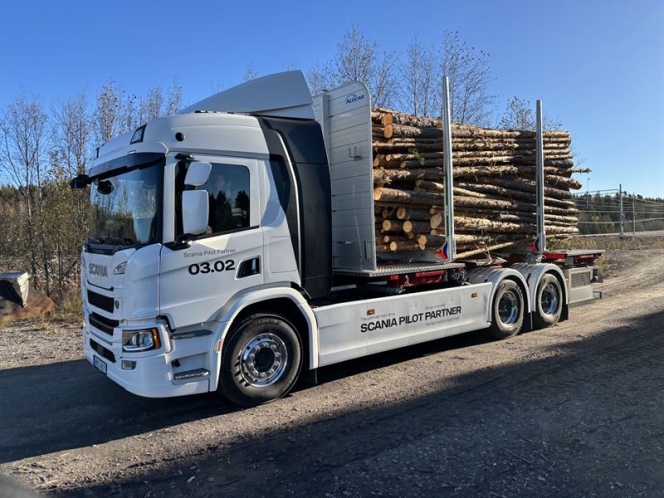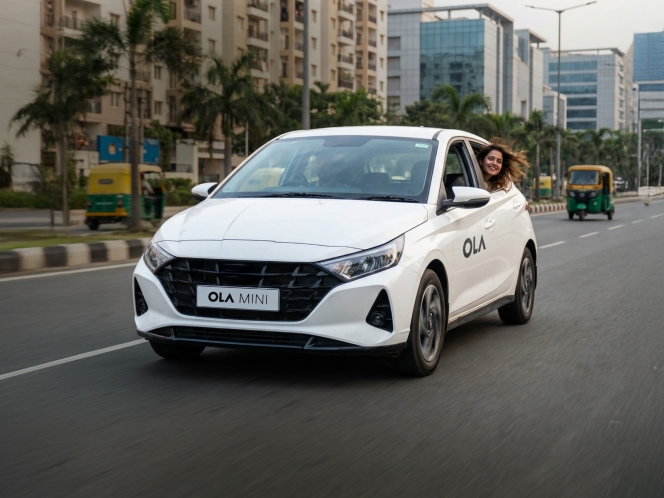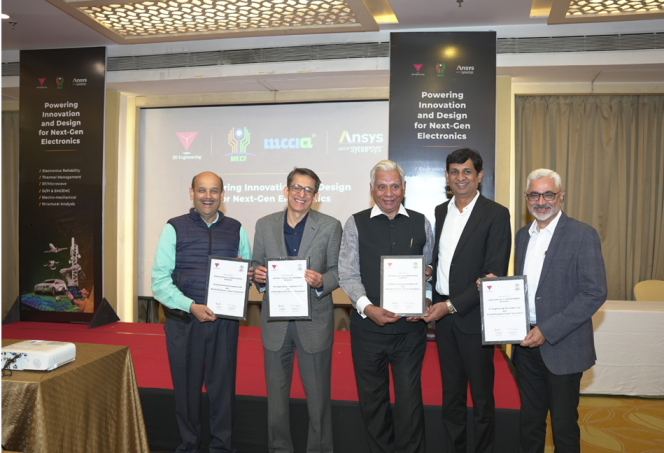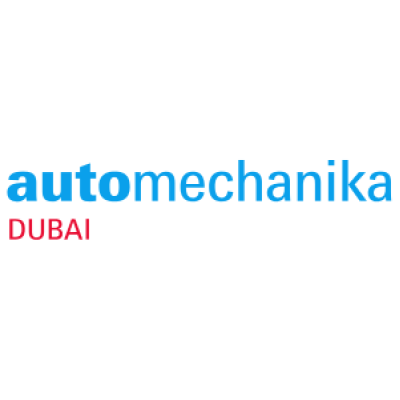- Sona BLW Precision Forgings Ltd
- Sona Comstar
- NOVELIC
- Darko Tasovac
- Veljko Mihaljovic
- Dr Veselin Brankovic
- Vivek Vikram Singh
Sona Comstar To Acquire 54 Percent Equity Stake In NOVELIC
- By MT News
- January 09, 2023

Sona BLW Precision Forgings Ltd (Sona Comstar), a global provider of automotive technology solutions, has signed an agreement to acquire a 54 percent equity stake in NOVELIC, a Serbia-based company founded in 2012 and a provider of mmWave radar sensors, perception solutions and full-stack embedded systems.
The equity stake will be acquired for €40.5 million through a combination of primary and secondary purchases with a staggered payment structure in the ratio of 60:20:20 at closing, 12 months and 24 months, respectively. Sona Comstar states that the transaction values NOVELIC at an enterprise value (EV) of €64.5 million on a pre-money basis and €75 million on a post-money basis, with an implied valuation multiple of 26 times CY22 Estimated PAT. The transaction is expected to close by the end of Q4 FY23 and is subject to customary closing conditions.
Sona Comstar claims that the acquisition is expected to be EPS accretive for it from the first year and offers strong growth opportunities over the medium term. The acquisition of NOVELIC is accretive to Sona Comstar's management bandwidth, given a shared cultural commitment to innovation, technology and profitability, states the automotive technology solutions provider.
In line with its strategic roadmap, Sona Comstar is foraying into the ADAS sensor market. With the acquisition, Sona Comstar states that it has started building its third business vertical of ADAS sensors and software to address the megatrends of increasing vehicle autonomy and automation.
According to Sona Comstar, NOVELIC's mmWave radar technology is the best solution for in-cabin sensing due to its high accuracy, lower cost and privacy protection of occupants' privacy. Through its sophisticated radar design and signal processing algorithm, NOVELIC's in-cabin monitoring solution detects life presence (LPD), child presence (CPD) and seat occupancy (SOD) amongst others. As per Sona Comstar, NOVELIC's in-cabin solution is highly accurate as it works under all light conditions, detects vital signs (heart rate and respiration) and locates objects anywhere in the cabin. NOVELIC's mmWave radar-based solution removes the need for weight sensors and associated wiring harnesses, resulting in significant cost savings for carmakers. Unlike cameras, mmWave radar-based in-cabin sensing protects the privacy of occupants in the car, claims Sona Comstar.
The current NOVELIC team, led by its founders Darko Tasovac, Veljko Mihaljovic and Dr Veselin Brankovic, will continue to lead the operations, ensuring continuity while leveraging Sona Comstar's scale and customer access for business development. According to Sona Comstar, the founders will hold 46 percent equity in NOVELIC after the completion of the transaction.
Commenting on the acquisition, Vivek Vikram Singh, Managing Director and Group CEO of Sona Comstar, said, “I am excited to welcome NOVELIC to the Sona Comstar family. With this acquisition, we have added market leading, in-cabin radar-sensing technology to our technology offering. Increasing vehicle autonomy and automation is an emerging technology revolution in our industry. As we had done with EVs in 2016, we are taking a meaningful early step in the direction of the electrified autonomous vehicles or e-AV. NOVELIC adds the hardware and software capabilities to design integrated systems for autonomous driving, including AI and ML as well as ASIC experience, to what we already have in mechanical, electric and electronic abilities. It is the beginning of building our third business vertical of sensors and software. In addition to its technology prowess, Novelic is unique in its approach to profitability and sustainable growth. In many ways, NOVELIC is like Sona in how we value money, technology and growth.”
Sharing his thoughts, Mihajlovic, Co-founder and CTO of NOVELIC, said, "NOVELIC was founded with a clear mission to develop end-to-end capabilities in mmWave radar technology and to commercialise it through various product lines. We started as a team of five, and today, we are over 160 people, among which 130 engineers and 10 PhDs developing product platforms at various European locations. We have managed to do it organically by providing value to our customers and generating and growing our revenue and profit year after year. For moving to the next phase of our growth, we are delighted to have a strategic partner in Sona Comstar which shares the same commitment to innovation and technology and will support us in scaling up our business. The moment we first interacted with the Sona Comstar team, we knew this was 'the one' because we had a great alignment of core values."
- Scania
- Horse Powertrain
- SCA
- hybrid truck
- Aurobay Technologies
- Matias Giannini
- Tony Sandberg
- Ingo Scholten
Scania Selects Horse Powertrain For Range-Extender Truck Pilot In Sweden
- By MT Bureau
- December 03, 2025

Horse Powertrain has been selected by Scania to provide its range-extender system for a pilot vehicle, currently operating as a heavy-duty timber truck in Sweden. The collaboration is a step in testing hybrid powertrain solutions for demanding transport applications such as forestry logistics.
The pilot is part of the Scania Pilot Partner program and is currently operating in Sweden under SCA, one of Europe’s forestry companies.
The vehicle is built to handle Sweden’s timber routes, transporting heavy loads through remote terrain where access to charging infrastructure remains scarce. By combining a battery-electric drivetrain with the generator designed in Sweden by Horse Powertrain’s division Aurobay Technologies, the truck achieves both long-distance capability and reduced CO2 emissions.
The test route covers approximately 16 km, with an operational target of completing 7–8 rounds per day, comparable to a diesel truck.
The configuration supports the truck’s battery packs with a 120 kW range-extender unit based on Horse Powertrain’s 2.0 litre multi-fuel engine. Acting purely as an onboard charger, the unit supplies electric energy when required during long hauls, temperature extremes, or delays.
Matias Giannini, CEO, Horse Powertrain, said, "Forestry logistics represents one of the toughest challenges for electrification. The forest roads of northern Sweden demand strength, range and reliability. Charging stations are few, but the timber never waits. You can think of our range-extender as a powerbank for a heavy-duty truck: silent, efficient, and always there when you need it. By partnering with Scania and drawing on our engineering excellence, we’re proving how a compact, high-efficiency range-extender enables electric trucks to operate reliably in the most demanding environments. It’s a technology that cuts CO2 now.”
Tony Sandberg, Vice-President at Scania Pilot Partner, added, "What we’re doing in Sweden with Horse Powertrain and SCA builds directly on the 100-day trial we ran together with a logistics partner in Germany earlier this year. That vehicle logged almost 22,000 kilometres and drove more than 90 percent of the time on pure electric power, only using the range-extender when no charging was available. The result was a CO2 reduction of over 90 percent compared with a diesel truck. Those learnings give us a strong foundation as we tailor the system for demanding Nordic timber operations."
Ingo Scholten, Chief Technology Officer, Horse Powertrain and Managing Director Sweden, Aurobay Technologies division, said, “Electrifying heavy-duty routes means understanding what drivers and operators face hour by hour. Long stretches without charging, variable loads and rapidly changing weather. This pilot lets us study those realities directly in day-to-day timber operations. The range-extender’s role is simple. Provide a stable, efficient energy supply so drivers can complete their full shift without interruption and with far lower greenhouse-gas emissions than a traditional diesel truck. The data we gather here will guide how we refine the technology and scale it for wider use across demanding transport applications.”
Horse Powertrain’s modular range-extender architecture builds on the core technology used in its passenger-car and light-commercial hybrid systems, adapted for the higher power output and durability demands of heavy-duty applications. Unlike conventional fixed-speed generator sets, the engine can operate across its full power band, allowing the system to deliver the required output efficiently while keeping fuel consumption, noise and vibration low.
The pilot truck is now undergoing testing in regular operations, carrying full timber loads to gather performance and efficiency data in real-world conditions. The results will guide future deployments of electrified powertrains in the forestry sector and other heavy-duty applications.
Maruti Suzuki Launches One India, One EV Charging Platform
- By MT Bureau
- December 03, 2025
Maruti Suzuki India, the country’s largest passenger vehicle maker, is gearing up to mark its entry into the electric vehicle segment with the soon-to-be-introduced e Vitara has announced an EV ecosystem with a comprehensive end-to-end digital platform for charging needs, including home and public charging, with an integrated payment journey.
The company has signed collaboration agreements with 13 Charge Point Operators (CPOs) and aggregators to provide seamless charging experiences on a single platform.
Maruti Suzuki has established a network of over 2,000 exclusive charging points across its nationwide dealer network, spanning more than 1,100 cities. Customers’ charging needs are further supported by the extensive partner-operated all-India charging network.
Aligned with its global vision, Maruti Suzuki will work with its partners to enable more than 100,000 Public Charging Points by 2030.
Hisashi Takeuchi, Managing Director & CEO, Maruti Suzuki India, said, “At Maruti Suzuki, we strive to extend a delightful ownership experience to our customers to build lasting trust. Today, we are taking a historic step, as we enter the domain of electric mobility with full readiness to address the EV charging concerns and boost customer confidence. We have established a robust network of over 2,000 Maruti Suzuki exclusive charging points across our sales and service network, spanning more than 1,100 cities. Further, we have collaborated with 13 Charge Point Operators to offer access to a vast charging infrastructure across the country. Aligned with Suzuki’s global vision, we plan to introduce multiple EVs and to support this, our aim is to enable a network of over 1 lakh charging points across India by 2030, along with our Dealer and CPO partners.”
'E for Me' Digital Platform
The Maruti Suzuki ‘e for me’ EV charging mobile app enables end-to-end usage of EV charging points from partner-operated charging points and Maruti Suzuki’s own network on a single platform.
The app offers a uniform customer journey for EV charging and payment through UPI or exclusive ‘Maruti Suzuki Money’, powered by Razorpay.
The platform's functions include:
- Locate, Pay & Use EV charging points available on the app.
- Use Public and Smart Home Charger from the same app.
- One card for ‘Tap N Charge’ functionality at Maruti Suzuki dealer outlets and home charger.
- Mirror e for me app on the infotainment system for seamless in-car EV charging experience.
- Remotely start/stop and manage the power output of the smart home charger.
Partho Banerjee, Senior Executive Officer, Marketing & Sales, Maruti Suzuki India, said, “Today is the dawn of a new era for electric mobility in India. It gives me immense pleasure to say that Maruti Suzuki is EV ready and will be ‘By Your Side’ with our comprehensive new platform that addresses key concerns around EV charging infrastructure. Leveraging India’s largest dealer network and our charging partners’ network, we are ensuring there are EV charging points at an average distance of 5-10 kilometres at key locations in the top 100 cities of India. DC fast chargers are also located at regular intervals along key highways to enable nationwide driving freedom for our prospective EV customers. To further enhance peace of mind, we have deployed a 1.5 lakh-strong specially-trained EV workforce to cater to every need of our customers. We have also activated 1500+ EV-ready service workshops across 1100 cities for meeting after-sales requirements to support EV ownership in every part of the country.”
To showcase the network readiness, four e VITARAs were flagged off from Gurugram in all four directions – Srinagar (North), Kanyakumari (South), Bhuj (West) and Dibrugarh (East) – as a part of the ‘e drive’.
The e Vitara Born EV, which is ‘Made-in-India and exported around the world,’ has been rigorously tested over 10 million test kilometres. Tested from ‘Sand to Snow’ over a temperature spectrum of 60deg Celsius to -30deg Celsius, the e Vitara has delivered a driving range of 543 km.
Banerjee added: “Words aside, we are showcasing the prowess of this platform by flagging off a radical ‘e drive’ that will demonstrate the real-world efficacy of Maruti Suzuki’s comprehensive EV charging network. With the ‘e drive’, we aim to boost user confidence and execute faster EV adoption, working alongside the nation’s sustainability goals for net zero.”
Ola Intros Non-AC Cab Options On Its Platform Across India
- By MT Bureau
- December 02, 2025

Bengaluru-based ride-hailing company Ola Consumer has launched its non-AC ride category across India, becoming the only player in the country to offer this option at scale.
The company stated that the goal is to offer customers maximum choice across various price points to meet their travel needs. The new category will also enable cab drivers to have lower fuel consumption and improve their earnings.
Ola Consumer spokesperson said: “With the non-AC category, we’re pushing the boundaries of how affordable and accessible urban mobility can be in India. Millions of people rely on daily, value-driven transport, and this offering is built entirely around their needs. The early response has been incredible and shows how strongly India wants more transparent, flexible, and fairly priced mobility. This move marks a step ahead in our mission to rethink mobility in India, and make it truly inclusive for every consumer.”
- Synopsys
- 3D Engineering
- Ansys
- MCCIA Electronic Cluster Foundation
- MECF
- Mike Yeager
- Murali Pullela
- Shrikrishna Gadgil
- Ajay Deshkar
Synopsys And 3D Engineering Open Design Center In Pune
- By MT Bureau
- December 02, 2025

Synopsys, in association with 3D Engineering (an Ansys Elite Channel Partner), has inaugurated a new Design Center for Engineering Simulation at the MCCIA Electronic Cluster Foundation (MECF) in Pune.
The facility aims to accelerate access to advanced simulation technologies for MSMEs and be a catalyst for industrial R&D in Tier 2 and Tier 3 cities, industry-academia collaboration and student training.
The Design Center will enhance simulation-led innovation and adoption in electronic product design engineering for MSMEs in automotive, aerospace and defence, electronics and healthcare.
The facility will provide hands-on access to engineering tools in structural analysis, thermal modelling, electromagnetics and digital twin technologies. It is equipped with licensed Ansys (now part of Synopsys) simulation platforms and a high-performance computing (HPC) infrastructure.
The MECF facility is one of the Common Facility Centers (CFCs) approved by the Ministry of Electronics and Information Technology (MeitY), valued at INR 710 million. MECF is promoted by the Mahratta Chamber of Commerce, Industries and Agriculture (MCCIA).
This initiative aligns with India's goals under 'Make in India' and 'Skill India' by enabling simulation-led R&D, accelerating time-to-market for local manufacturing innovations and building a talent pipeline trained in engineering challenges.
It will serve as a dual-purpose hub for skill development and industry consultancy, offering design, simulation services and hands-on training. It will also bridge the cost and resource gap for smaller enterprises by offering discounted access to design tools and expert support.
Mike Yeager, Area Vice-President, Synopsys, said, “Simulation is a foundation of modern engineering, and we believe in making these powerful tools accessible everywhere in India. Our collaboration with 3D Engineering and MECF, supported by the Ministry of Electronics and Information Technology (MeitY), will empower students, startups, and SMEs to leapfrog into next-generation design and innovation.”
Murali Pullela, Area Sales Director, Synopsys, said, “Our collaboration with MECF reflects the company's commitment to empower innovation from silicon-to-systems. By equipping the design center with advanced engineering tools, India’s electronics ecosystem can be strengthened, accelerating product development aligned with global standards.”
Shrikrishna Gadgil, CEO, MECF, said, “MECF helps the industry in their product development cycle from design to certification, which will support the electronics ecosystem in the region. Our vision is to make the region vibrant with innovation, fostering new products and technologies, and establishing it as a hub for futuristic products and a center of technology excellence. We’re committed to bringing world-class technology and infrastructure closer to grassroots engineering talent. For us, this Design Center by 3D Engineering with Synopsys, as the principal partner is not just an investment in infrastructure, but also an investment in people, capability-building, and future innovation.”
Ajay Deshkar, Managing Partner, 3D Engineering, said, “As a long-standing Ansys Channel Partner, we at 3D Engineering are proud to enable this ecosystem where cutting-edge simulation technology meets local ingenuity. This Design Center is a model for how industry partnerships can meaningfully drive regional innovation and contribute to India’s technological self-reliance.”






Comments (0)
ADD COMMENT